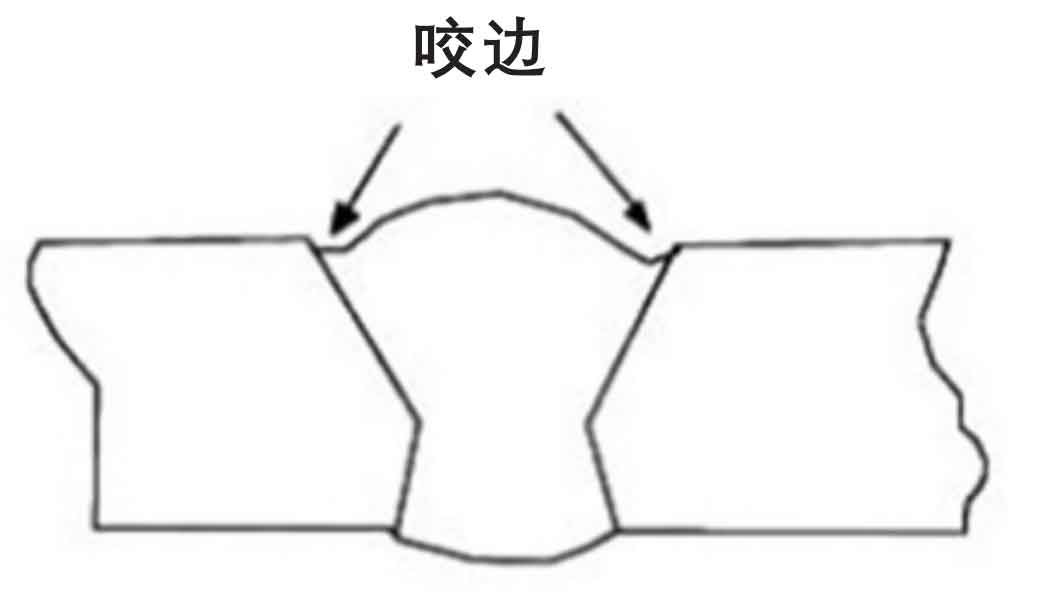A Comprehensive Overview to Identifying, Averting, and Fixing Undercut Welding Issues in Your Welding Tasks
In the realm of welding, experiencing undercut issues is an usual difficulty that can jeopardize the architectural integrity and general high quality of your welding projects. Remain tuned as we discover the important elements of identifying, stopping, and repairing undercut welding issues, supplying you with valuable insights and techniques to elevate your welding abilities to the following degree.
Common Reasons For Undercut Welding
Undercut welding, a common issue in welding procedures, can be brought on by numerous elements that require to be very carefully recognized and resolved to guarantee the stability of the weld joint. Among the key causes of undercut welding is excessive warmth input. When the welding specifications, such as voltage, existing, or travel speed, are not correctly set, an excessive quantity of warm can be produced. This excess warmth brings about the melting and subsequent elimination of the base product along the edges of the weld joint, developing a groove called undercut.
One more typical cause of undercut welding is inappropriate welding technique. Inadequate control of the welding torch or gun, inaccurate angle or distance between the work surface and the lantern, or inconsistent traveling speed can all contribute to the formation of undercut. Furthermore, making use of the wrong welding consumables or electrode size for a specific joint arrangement can cause undercut issues. Recognizing these source and implementing corrective measures is essential in stopping and fixing undercut welding issues in welding projects.
Identifying Undercut in Welds

To recognize undercut accurately, correct lights and magnification devices are necessary to evaluate the weld joint completely. Utilizing devices such as a welding scale or a magnifying glass can assist in discovering even the tiniest undercut blemishes. Furthermore, running a finger or a fingernail along the weld joint can sometimes reveal undercut, as the surface area may feel uneven or have a dip where the undercut exists.
Safety Nets for Undercut
Having a deep understanding of the reasons of undercut in welds permits for the implementation of effective preventive measures to maintain weld high quality and integrity. These settings must be maximized to avoid too much warmth input, which can lead to undercut formation.

Methods for Taking Care Of Undercut

To address undercut issues successfully, welders can utilize certain techniques focused on fixing the flaw and bring back the stability of the weld joint. One technique is to change the welding parameters, such as the voltage, present, and travel rate, to guarantee appropriate warmth input and fusion. Boosting the welding present or reducing the travel rate can help fill out the undercut. In addition, transforming the welding method from a press to a drag or vice versa can also assist lessen undercut.
An additional method is to use a weaving movement while welding to guarantee proper sidewall fusion and fill in the undercut. By oscillating the welding arc back and forth within the weld joint, the welder can deposit much more filler material right into the undercut areas, successfully removing the issue.
Additionally, grinding out the undercut and rewelding the joint can be a practical option for a lot more extreme undercut concerns - Preventing weld undercut. This procedure involves eliminating the undercut section, preparing the base metal, and afterwards rewelding the joint with appropriate welding parameters and methods to avoid undercut check my site from returning

Professional Tips for Avoiding Undercut
Utilizing appropriate welding methods and preserving control over vital welding specifications are crucial techniques for welders aiming to stop undercut in their weld joints. One specialist idea for avoiding undercut is to guarantee correct joint prep work. This includes cleansing the base steel extensively to get rid of any type of impurities that can bring about undercut development. In addition, picking the proper welding procedure and filler steel for the specific application can aid avoid undercut. Welders need to additionally pay close interest to the welding present and voltage setups, ensuring they are within the advised range to avoid getting too hot and prospective undercut. Preserving a consistent travel speed throughout the welding process is another crucial idea to avoid undercut. By relocating at a stable speed, welders can make certain correct combination and lower the possibility of undercut development. Lastly, examining the weld grain after conclusion can aid identify any type of indicators of undercut very early on, enabling prompt corrective action to be taken.
Conclusion
To conclude, determining, protecting against, and fixing undercut welding problems in your welding tasks is vital for making sure sturdy and solid welds. Preventing weld undercut. By comprehending the usual reasons for undercut, being able to identify it in welds, executing precautionary procedures, and using correct methods for taking care of undercut, you can avoid prospective issues and develop high-quality welds. Following specialist suggestions for staying clear of undercut can assist you boost your welding skills and generate far better lead to your jobs
Undercut welding, an usual issue in welding processes, can be created by various aspects that need to be thoroughly recognized and resolved to make sure the integrity of the weld joint. Additionally, running a finger or a finger nail along the weld joint can sometimes reveal undercut, as the surface area may really feel uneven or have a dip where the undercut exists.
Utilizing correct welding strategies and preserving control over essential welding specifications are vital approaches for welders aiming to protect against undercut in their weld joints.In verdict, identifying, avoiding, and repairing undercut welding issues in your welding jobs is essential for guaranteeing long lasting and strong welds. By understanding the usual click here for info causes of undercut, you could look here being able to determine it in welds, carrying out preventative actions, and using correct techniques for dealing with undercut, you can avoid prospective problems and develop high-quality welds.